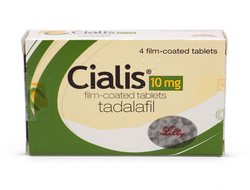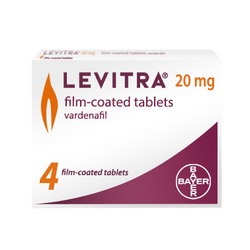Modern society has almost fully integrated into the commercial Internet space. We are not yet afraid to order things in online stores because it is very profitable and convenient. However, from time to time those of us who prefer real shopping, have to revise their own decisions and preferences. For example, when there is a need to purchase medication. When such a necessity appears you are welcome to surf Canadian pharmacy with a free access to generic medications produced for meeting all customers’ needs including the demand to get high-quality treatment.
Canadian Health Care Mall: An Example of a Trustworthy Online Pharmacy
The fact is that online pharmacies perform its function almost on the same principle as the conventional pharmacies. However, the cost of drugs in pharmacy mall online is much cheaper. Forming the price of a medical product, for example, Canadian Health Care Mall online pharmacy does not include the rental of premises or the wages of pharmacists. For quite objective reasons, buying medications in online pharmacies is much more profitable. To confirm this fact, just visit https://canadianhealthcarepharmacymall.com/ of Canadian Health&Care Mall and, become acquainted with the price of the offered medications, find out the cost of the drug in the nearest drugstore and compare them. As a result, you will see the difference of pharmacy mall Canada from the conventional drugstores.
In addition, the online pharmacy guarantees you other benefits as well. For example, you can place an order in Canadian Health Care Pharmacy Mall at any time of the day or night. Buyers do not feel any inconvenience of having no opportunity to speak with a pharmacist face-to-face. Buyers of online pharmacies get advice over the phone or by using e-mails.
Do not doubt the authenticity of the medications that Canadian online pharmacy offers. Every such drug is of 100-% quality with the corresponding certificates. Each medications’ price is defined per item and per pack. If there is a special discount you will see the real price of the product, the price with discount and how many you have saved while making orders via Canadian Health&Care Mall. The quality is guaranteed. As a result of such a business, we have gained trustworthy reputation and thousands of customers from worldwide.
Also, pharmacy mall online located in Canada, guarantees its customers seasonal discounts, providing an opportunity to save much more money while buying generic drugs online. The payment options available are various being suitable for many online shoppers. They are: Visa, MasterCard, eChecks and Bitcoin with 10-% discount. If you pay for an order by means of Bitcoin, you are eligible for 10-% discount.
The online pharmacy guarantees 100% financial responsibility for the buyer’s order in case if your order amount is over $ 200.00, if less – you have to pay some fee for getting delivery insurance. In the event that something happens with the package during delivery, the seller will refund the money. However, in 99.9% of cases, the client receives his order undamaged. Canadian Pharmacy does its best to provide the most outstanding and perfect service ever you may meet online.
Best-Sellers of Canadian Health Care Pharmacy Mall
Among the best-sellers of Canadian Health Care Pharmacy Mall, the leading place is taken by Viagra, Cialis and Levitra. These are the main 3 ED drugs making men get rid of the ashamed feeling:

-
- Viagra is a drug that is aimed at restoring the normal sexual function of a person provoking a long-lasting erection. By itself, this physiological mechanism, which is responsible for the erection, cannot occur without the nitric oxide release during sexual stimulation. Due to Viagra effect, a person’s blood circulation magnifies. Moreover, the active substance – Sildenafil helps relax the cavernous bodies with nitric oxide. Viagra is available in the form of blue pills diamond-shaped with cut and rounded edges. On one side of the tablet, the word “Pfizer” is written, on the other – “VGR 50” or “VGR 100”, which corresponds to Sildenafil content. The drug Viagra is intended for the treatment of erectile dysfunction. This ED drug, the best-seller of Canadian Pharmacy, helps such men achieve an erection, keep it during sexual intercourse. Without sexual stimulation, the drug will not function at all.

-
- Cialis is a medication for reviving erectile function. It is comprised of the only active substance – a selective inhibitor of the PDE-5 group known as Tadalafil. Under the influence of such a component premature ejaculation disappears prolonging sexual intercourse as much as possible. Tadalafil is a synthetic substance, so Cialis cannot be considered a dietary supplement. The mechanism of Canadian Pharmacy Cialis action is to increase the nitric oxide release, respectively – the penile muscle tissue relaxation. As a result of blood flow increase to the pelvic organs, a man has an increased sensitivity of nerve endings; rapid achievement of erection; enhanced sexual intercourse duration; improvement of general tone and endurance. Extension of erection under the influence of Cialis occurs, in turn, due to the suppression of the enzyme PDE-5 and the serotonin absorption, which is actively produced during sex.

- Levitra is considered the second most popular drug, which can increase erectile function. If you have a desire to spend a romantic night with your girlfriend, then you should know that applying such a drug, you will be satisfied with the outcome. Levitra is famous for the fact that it is softer, comparing with other ED drugs It should be noted that sexologists are often prescribed Levitra as an elimination of the problem with the erectile function, it is such a medication, so you should understand that you can always use such a drug. In general, the best option is to seek advice from the professionals, who, in turn, will be able to choose the most optimal variant of this drug type for you, enjoying the result and the effect that will please you.
Canadian Health&Care Mall offers you many other drugs to improve erectile function as well as other medications devoted to getting rid of many other health problems. You may make an order right now and feel all the comfort of utilizing an online pharmacy service.


 The link between diabetes and a low testosterone level is well known. Men with diabetes are more likely to have a low testosterone level. And men with a low testosterone level are more likely to develop diabetes in the future. Decrease of testosterone in adipose tissue is leading to lower body insulin sensitivity, and this is a major factor in the development of diabetes. Men with low testosterone tend to have resistance to insulin: they need to produce more insulin to keep blood sugar at a normal level.
The link between diabetes and a low testosterone level is well known. Men with diabetes are more likely to have a low testosterone level. And men with a low testosterone level are more likely to develop diabetes in the future. Decrease of testosterone in adipose tissue is leading to lower body insulin sensitivity, and this is a major factor in the development of diabetes. Men with low testosterone tend to have resistance to insulin: they need to produce more insulin to keep blood sugar at a normal level. It is rather terrible to realize that you are a terminally ill patient or suffer from severe and chronic disease. It is very important to have someone to care about you, who are able to bring you glass of water or give you a pill as a part of treatment. Moreover you need to have someone to buy drugs but of course nowadays it is possible to order drugs via Canadian Health&Care Mall. It is the universal way to possess drugs without leaving your home. Everything you need is to choose the preparation and in one click put it into your shopping cart and pay for the bill. It is rather simple but if you cannot handle a computer and do not have the access to the Internet it becomes undertaking that’s why there is one more reason why you need someone to be with you alongside.
It is rather terrible to realize that you are a terminally ill patient or suffer from severe and chronic disease. It is very important to have someone to care about you, who are able to bring you glass of water or give you a pill as a part of treatment. Moreover you need to have someone to buy drugs but of course nowadays it is possible to order drugs via Canadian Health&Care Mall. It is the universal way to possess drugs without leaving your home. Everything you need is to choose the preparation and in one click put it into your shopping cart and pay for the bill. It is rather simple but if you cannot handle a computer and do not have the access to the Internet it becomes undertaking that’s why there is one more reason why you need someone to be with you alongside. A vast body of research has identified key elements that are essential to quality asthma care (Fig 6). Trends in health-care financing and coverage promise reduced access to private and public health insurance, and even with coverage, greater difficulty in accessing a full range of health-care services with affordable out-ofpocket costs. Multiple policy levers will need to be simultaneously employed to ensure access to the full range of services needed for effective asthma management, especially among low-income and minority persons with asthma in order to reduce the disparities gap.
A vast body of research has identified key elements that are essential to quality asthma care (Fig 6). Trends in health-care financing and coverage promise reduced access to private and public health insurance, and even with coverage, greater difficulty in accessing a full range of health-care services with affordable out-ofpocket costs. Multiple policy levers will need to be simultaneously employed to ensure access to the full range of services needed for effective asthma management, especially among low-income and minority persons with asthma in order to reduce the disparities gap.